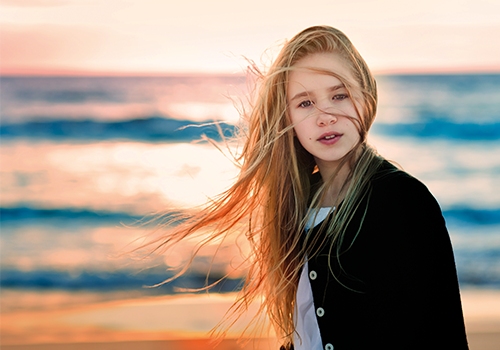We all love snapping pics of people – at home, on family holidays and during special occasions. Jac Kritzinger tells us how to get the best results
Whether your images are destined for a photograph album or a Facebook page, photographing the people around you can be a lot of fun and a great way to capture memories. But, if you’re packing just a basic DSLR kit and want your pictures to stand out from the usual snapshots, try the following tips.
Candid is king
Asking your subject to look directly at the camera ensures the vital eye contact that makes for a good portrait, but the most natural images (and expressions) happen when you simply allow people to go about their business and photograph as an observer, without directing them.
Make sure to use your camera’s ‘auto’ setting, as this will allow you to capture the action – especially kids at play – as it unfolds, without having to waste time fiddling with exposure adjustments.
Learn about light
When you are photographing people, light can be your best friend or your worst enemy. If you’re out and about on holiday, chances are most of your photo opportunities will arise outdoors – and not necessarily in great light. On sunny days, neutralise harsh shadows falling across people’s faces by asking them to move slightly or using flash to brighten skin tones. When getting people to pose, make sure they aren’t squinting directly into the sun.
A polarising filter is also handy in bright conditions, as it will cut out haze and improve contrast and colour. When you’re shooting against a white, reflective background (such as beach sand or snow), overexpose slightly to avoid your camera’s light meter under-exposing the subject. In comparison, cloudy weather often makes for the best outdoor portraits, as the light is more even and diffused.
Grab the right glass
Try to have both a wide-angle and a telephoto lens handy when taking photographs of family and friends, to improve your chances of getting the best shots. Wide-angle lenses (in the 18–35 mm range) will include more of your subject’s environment, which can add vital context to the image. Telephoto lenses (in the 70–200 mm range) will compress perspective and train the viewer’s eye on the subject itself, without the distortion of wide angles. Using large apertures (in the region of f/2.8) with telephoto lenses will ensure your subject stays sharp, throwing any distracting background out of focus, while at the same time creating soft, even skin tones.
Alternatively, if you don’t feel like lugging around more than one lens on holiday, a reasonable option is a zoom that covers an extensive focal distance (for example, 18–135 mm). Whichever lens you go for, and whether or not the shot is posed, make sure you focus on the subject’s eyes, as this is the area the viewer tends to be drawn to first.
Vary your viewpoint
Experimenting with height and angle of view is often the difference between a rather bland shot and a really great one. When photographing children, make sure you get down to their eye level (don’t worry, grass stains do come out in the wash!), as this makes for more intimate images. With adults, finding a rock, chair or tree to stand on and asking your subjects to look up at you will focus attention on their faces and give a more flattering look.
Take great care in your composition, evaluating the surroundings. Stay away from distracting backgrounds, especially around people’s heads, as this will detract from their faces. If you are going for a tight shot, feel free to frame out people’s arms and legs, but avoid cropping them at joints such as wrists, elbows and knees, as this often results in an uncomfortable, amputated look.
Bring in black-and-white
Remember to snap in black-and-white from time to time, or try converting your photos afterwards using software. Black-and-white photos of family and friends often convey a nostalgic, romantic feel. Greyscale portraits work best in backlit or high-contrast scenes; avoid anything containing strong tones of yellow and green, as this usually translates poorly in monotone.
Photography Gallo/Gettyimages
(This article was first published in the winter 2014 issue of AA traveller magazine)




